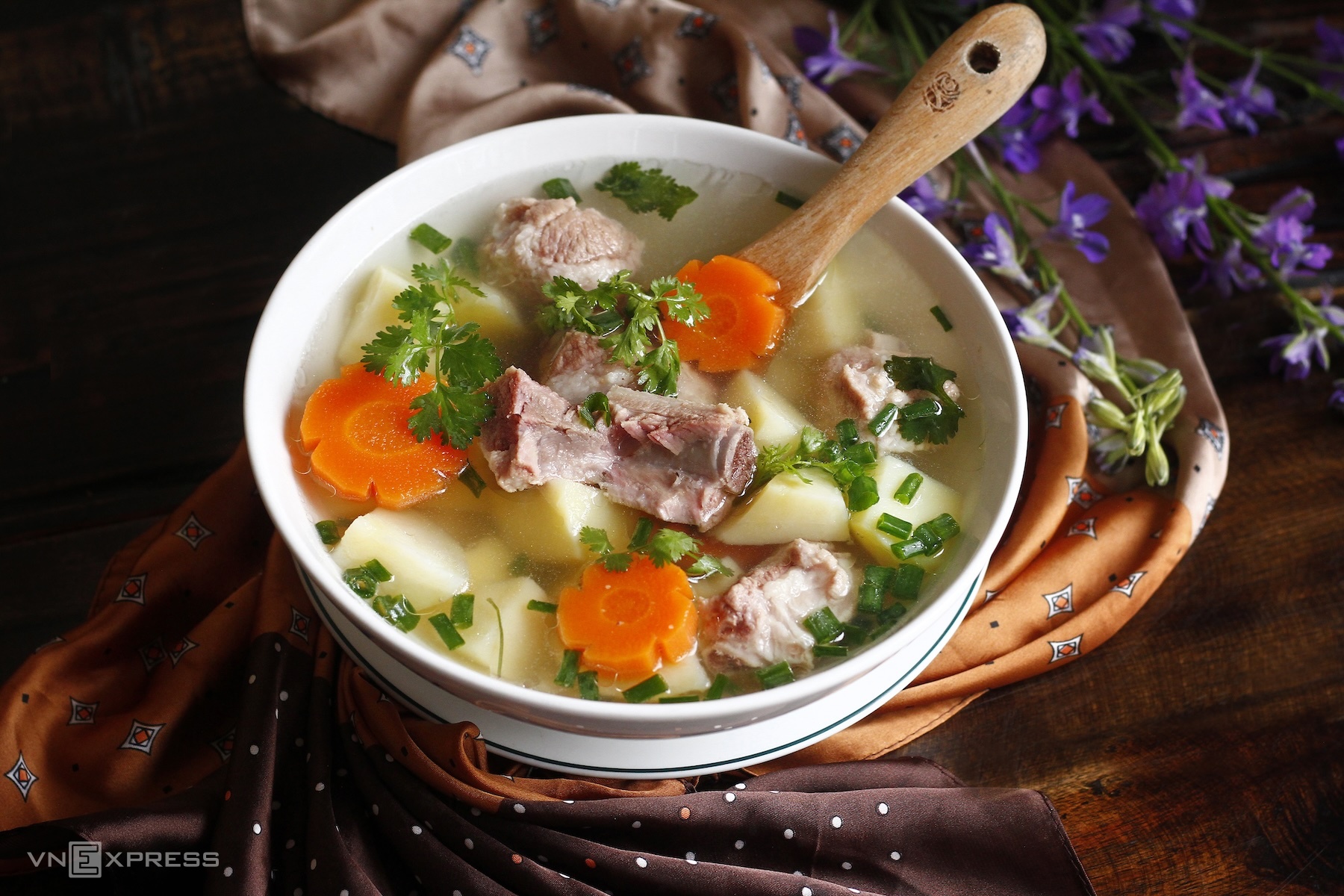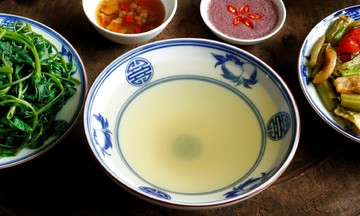The decision of whether to cover the pot when simmering bones depends on three factors: the desired flavor, heat transfer principles, and how ingredients change under prolonged heat.
For dishes requiring a rich, nutritious broth, such as pork knuckle and papaya soup, rib soup with potatoes and carrots, or Western-style Vietnamese fermented fish hot pot broth, covering the pot after skimming off the foam is optimal. A closed lid allows steam to build up, slightly increasing the pressure and maintaining a steady simmering temperature (95-98°C).
At this temperature, collagen in the connective tissues of bones and tendons hydrolyzes into gelatin, creating a thick texture and natural sweetness. Additionally, minerals like calcium, phosphorus, and magnesium dissolve better in a closed environment. Minimizing evaporation preserves the broth's volume and concentration, avoids adding water mid-way, and ensures a consistent, rich flavor.
Simmering with a closed lid also extracts more gelatin. At a stable temperature, collagen fibers slowly dissolve, blending with the water to create a "thick" and slightly viscous layer. This layer gives the broth a smoother, richer taste. Uncovering the pot during prolonged simmering yields less gelatin, resulting in a thinner, less sweet broth that may require additional seasoning.
 |
Rib soup with potatoes and carrots. Photo: Bui Thuy |
Rib soup with potatoes and carrots. Photo: Bui Thuy
Conversely, for traditional broths requiring clarity and a delicate flavor, such as beef pho, chicken pho, bun thang (Vietnamese rice vermicelli soup), bun moc (Vietnamese pork and mushroom soup), hu tieu (Vietnamese noodle soup), or Western-style Vietnamese sour fish soup, partially covering the pot is essential.
During simmering, the broth contains volatile compounds like aldehydes, ketones, and short-chain fatty acids. A closed lid causes these compounds to condense and fall back into the broth, carrying tiny fat particles, resulting in a heavier aroma, less delicate flavor, and cloudy appearance. Partially covering the pot allows steam to carry away these impurities, maintaining a clear broth and delicate aroma. It also facilitates regular skimming, minimizing suspended coagulated proteins, the primary cause of cloudiness.
Established pho restaurants often simmer bones for 6-8 hours at a low boil, with the lid partially or fully removed. From a yin-yang perspective, these dishes already utilize many "hot" spices like cinnamon, star anise, and cardamom; an open lid helps to "cool down" the broth, making it lighter, easier to digest, and more palatable.
For dishes requiring significant reduction, such as sauces and bases, the goal is to minimize water volume for maximum flavor concentration, making a fully open lid essential.
Direct contact with air increases evaporation, concentrating flavor and aroma compounds, creating a deeper and more pronounced taste. In European cuisine, this technique appears in dishes like jus or demi-glace, classic sauces simmered from beef bones, chicken bones, and vegetables. Typically, the initial stage involves a covered pot to maximize sweetness and gelatin extraction. Later, the lid is fully removed, and the sauce simmers for hours until thickened, turning a glossy brown with a rich flavor.
However, a completely uncovered pot throughout the process also means losing some B vitamins and aroma compounds to evaporation. Therefore, in some dishes, chefs combine methods: covering initially for maximum nutrient extraction and uncovering later to adjust aroma, color, and consistency.
Traditional wisdom and heat-moisture principles in cooking demonstrate: there's no single rule for covering or uncovering when simmering bones. Clear, delicate broths benefit from a partially open lid; rich, nutritious broths should be covered; and reductions require a fully open lid. This choice reflects the yin-yang balance in cuisine: knowing when to "retain" and when to "release" for optimal flavor and nutrition.
Bui Thuy












